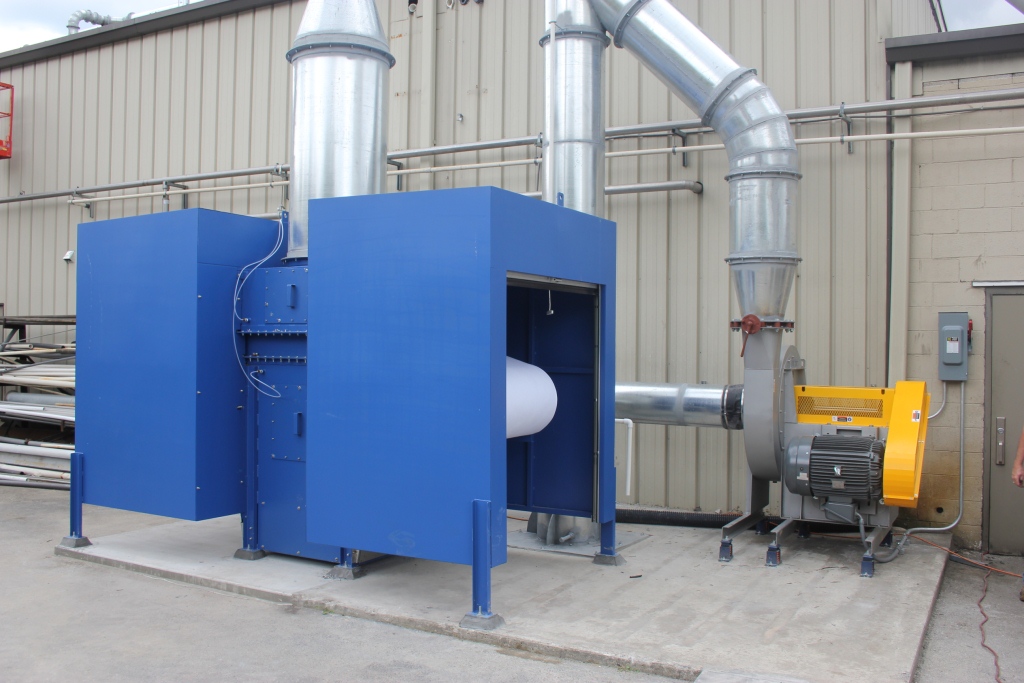
Background
A Fortune 500 manufacturing company had installed an electrostatic precipitator (ESP) to remove the very fine smoke particulate emitted from rubber curing ovens at one of its plants. The fine smoke particulate had been causing opacity levels (visible emissions) to exceed regulatory limits. Unfortunately, the ESP plugged with particulate within an hour of start-up. Adjustments were made to the ESP, but the ESP could not be made workable for the customer because it had to be turned off and cleaned out constantly.
Smoke from rubber curing ovens has among the finest (i.e., smallest) particle size distributions of all process smoke emissions, and these emissions present a further challenge of being very sticky and cause plugging of exhaust ductwork and other equipment in many cases.
Objective
The plant needed a replacement air emission control system, and the new system needed to be able to:
Action and Result
The plant learned of APC’s Ultra High-Efficiency Filter (UHF®) system through the company’s corporate environmental group. Having had the bad recent experience with the ESP system, the plant invited APC to first perform a pilot test of this filter system on one curing oven’s exhaust to prove the technology. After successfully conducting the pilot test, a first UHF® system was ordered to treat the fumes from four of sixteen curing ovens at the site, to prove the technology on multiple ovens.
Installation of the first UHF® system successfully achieved all project objectives: the stack exhaust from these four curing ovens easily met the opacity/visible emissions limit; the UHF® unit was well suited for the continuous 24/7 operation of the plant, not causing any production downtime; the UHF® unit met the plant’s operating cost objectives; and the unit was low maintenance. Further to meeting these objectives, APC also helped with the hood, ductwork and stack design for that installation.
Subsequent to the successful installation of the first UHF® system at the site, two additional UHF® systems were purchased for the plant: one system to treat emissions from four more rubber curing ovens, and a third UHF® system to treat emissions from the remaining eight curing ovens at the site. Thus three UHF® systems treat the exhaust from all sixteen rubber curing ovens at the site.